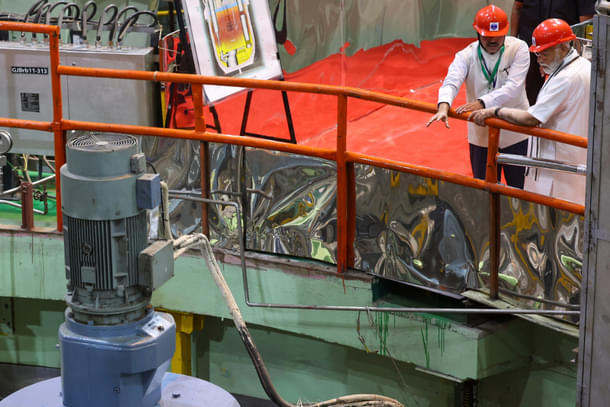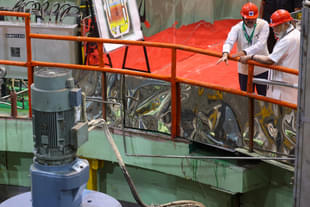News Brief
India's First Prototype Fast Breeder Reactor In Tamil Nadu's Kalpakkam Nearing Commissioning; First Criticality Expected By March Next Year
Kuldeep Negi
Apr 19, 2025, 01:24 PM | Updated 01:23 PM IST
Save & read from anywhere!
Bookmark stories for easy access on any device or the Swarajya app.


India’s first Prototype Fast Breeder Reactor (PFBR) in Kalpakkam, Tamil Nadu is likely to be commissioned from 2026, nearly two years after regulatory approval, news agency PTI reported citing officials.
Commissioning of the PFBR will mark the second stage of India’s three-stage nuclear programme that aims to recycle spent fuel to reduce the inventory of radioactive waste.
The Kalpakkam PFBR is India’s first nuclear reactor powered by plutonium-based mixed oxide fuel and using liquid sodium as coolant.
It will also reprocess spent fuel of Pressurised Heavy Water Reactors, which form the mainstay of nuclear power in India at present.
Unlike other nuclear plants operated by the state-run Nuclear Power Corporation of India Limited (NPCIL), the PFBR is being developed by BHAVINI—Bharatiya Nabhikiya Vidyut Nigam—at Kalpakkam.
Officials from the Department of Atomic Energy (DAE) recently told a parliamentary panel that BHAVINI’s 500 MW PFBR is in the "advanced stage of integrated commissioning, with expected first criticality by 2025-26".
The panel urged the DAE to "accelerate Fast Breeder Reactor (FBR) deployment, with the 500 MW Prototype Fast Breeder Reactor (PFBR) expected to attain first criticality by March 2026 and completion by September 2026".
Prime Minister Narendra Modi had witnessed the commencement of core loading at the PFBR site in March last year.
In July 2024, AERB granted permission for loading of fuel, first approach to criticality and conducting low-power physics experiments for the PFBR.
PFBRs are key to India’s nuclear energy programme, as their spent fuel will be used to power the thorium-based reactors that form the third stage of the closed fuel cycle.
The government has announced a nuclear energy mission that aims to produce 100 GW electricity through nuclear power.
Currently, India’s installed nuclear power capacity is 8.18 GW, with additional 7.30 GW under construction or commissioning and another 7.00 GW projects have been sanctioned and are currently undergoing pre-project activities.
These projects will raise India’s nuclear capacity to an estimated 22.48 GW by 2031–32.
Further, NPCIL plans to add another 15.40 GW through indigenous Pressurised Heavy Water Reactors and 17.60 GW through Light Water Reactors with foreign cooperation, bringing the total installed capacity to 55 GW.
BHAVINI will add 3.80 GW via Fast Breeder Reactors, while the rest of the planned capacity will be sourced from Small Modular Reactors, Bharat Small Reactors, and private sector-driven advanced nuclear technologies.
Also Read: ISRO Likely To Launch India-US NISAR Earth Observation Satellite In June
Kuldeep is Senior Editor (Newsroom) at Swarajya. He tweets at @kaydnegi.





